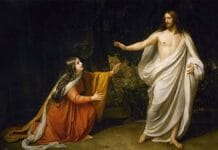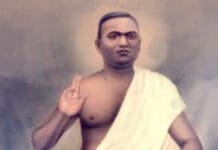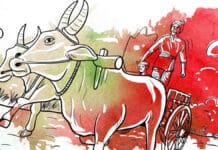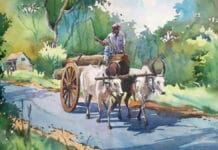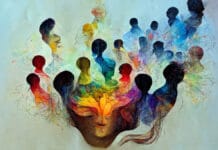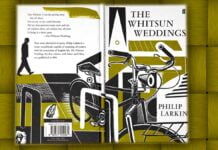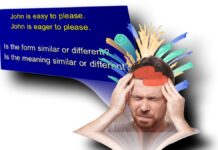Burlesque is a literary and dramatic form that uses humour, exaggeration, and absurdity to ridicule or satirize a subject, genre, or social norm. It has a rich tradition in literature, theatre, and, later, performance art. Burlesque thrives on humour, which results from the incongruity between the subject matter and its outlandish presentation.
The origins of burlesque can be traced to classical antiquity, particularly the works of Aristophanes in Greece and Roman satire, which often used humour and exaggeration to critique contemporary society and politics. The word derives from the Italian “burlesco”, which, in turn, is derived from the Italian “burla” – a joke, ridicule or mockery. Burlesque became more defined during the Renaissance, with works like Don Quixote by Miguel de Cervantes, which parodies the chivalric romance genre. In Restoration England, burlesque flourished as a form of dramatic satire. American burlesque developed its distinct style in the late 19th and early 20th centuries, incorporating more vaudeville elements, striptease, and bawdy humour. In recent decades, there has been a resurgence of interest in burlesque, often called “neo-burlesque”. This contemporary form draws inspiration from classic burlesque but usually incorporates modern themes, feminist perspectives, and a more comprehensive range of performance styles.
Parody and Satire
Burlesque is built on the foundation of parody and satire. It takes existing works of art, literature, or cultural norms and exaggerates or distorts them for comedic effect. The goal is to poke fun at the original work or concept, often through mockery and ridicule.
Exaggeration and Caricature
Burlesque relies heavily on exaggeration and caricature to create humour. Characters, situations, and themes are intentionally blown out of proportion, and stereotypes are often exaggerated to the point of absurdity.
Bawdy and Risqué Humour
Burlesque often incorporates bawdy, risqué, and sometimes crude humour. Sexual innuendos, double entendres, and suggestive humour were typical in traditional burlesque performances.
Variety Show Format
Burlesque shows often followed a variety show format, featuring a combination of comedy skits, music, dance routines, and striptease acts. This variety added to the overall entertainment value and allowed for different types of humour and parody.
Social Commentary
While primarily focused on humour and entertainment, burlesque also served as a vehicle for social commentary. By exaggerating and mocking societal norms, burlesque performances could subtly (or not so subtly) challenge or critique various societal issues and conventions.
Audience Interaction
Burlesque performances often encouraged audience participation and interaction. Performers would directly engage with the audience, breaking the fourth wall and involving them in the humour and parody.
Themes and Impact
Burlesque often serves as a vehicle for social and political commentary, using humour and exaggeration to critique power structures, societal norms, and cultural practices. Beyond its critical function, burlesque provides entertainment and an escape from everyday life, using humour and absurdity to offer a fresh perspective on familiar subjects. Burlesque has significantly influenced various comedic genres, including satire, parody, and slapstick. Its emphasis on humour, exaggeration, and social critique continues to resonate in contemporary literature, theatre, and film.

Types of Burlesque
High Burlesque
High burlesque treats trivial subjects with the grandeur and seriousness typically reserved for epic and heroic literature. Alexander Pope’s The Rape of the Lock is an example which elevates a petty social incident to epic proportions. It directly imitates a serious work or genre but applies it to a nonsensical subject. An example is Don Quixote by Miguel de Cervantes, which parodies the chivalric romance tradition.
Low Burlesque
Low burlesque treats serious subjects frivolously or absurdly. The works of Lewis Carroll, such as Alice’s Adventures in Wonderland, which treat complex themes with playful absurdity, are an example. While overlapping with burlesque, farce focuses more on exaggerated physical comedy and improbable situations. Examples are plays by Georges Feydeau, which use outrageous situations and characters to create humour.
Some notable examples of burlesque performances and works include the plays of Aristophanes, the Commedia dell’arte tradition in Italy —a form of improvisational theatre with stock characters —and the burlesque shows of the early 20th century in the United States, featuring performers like Gypsy Rose Lee and Mae West.
Burlesque has always been a form of entertainment that pushes boundaries and challenges societal norms through humour and parody. While often seen as lowbrow or vulgar, it has also served as a means of social criticism and a celebration of artistic freedom and expression.

